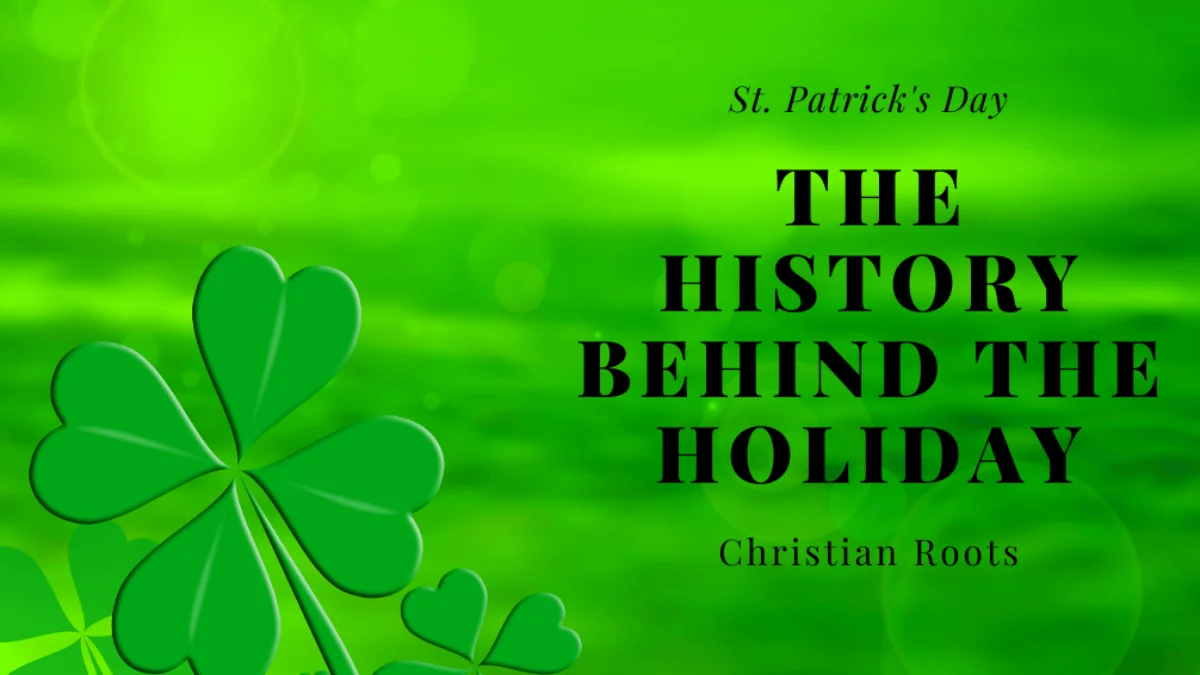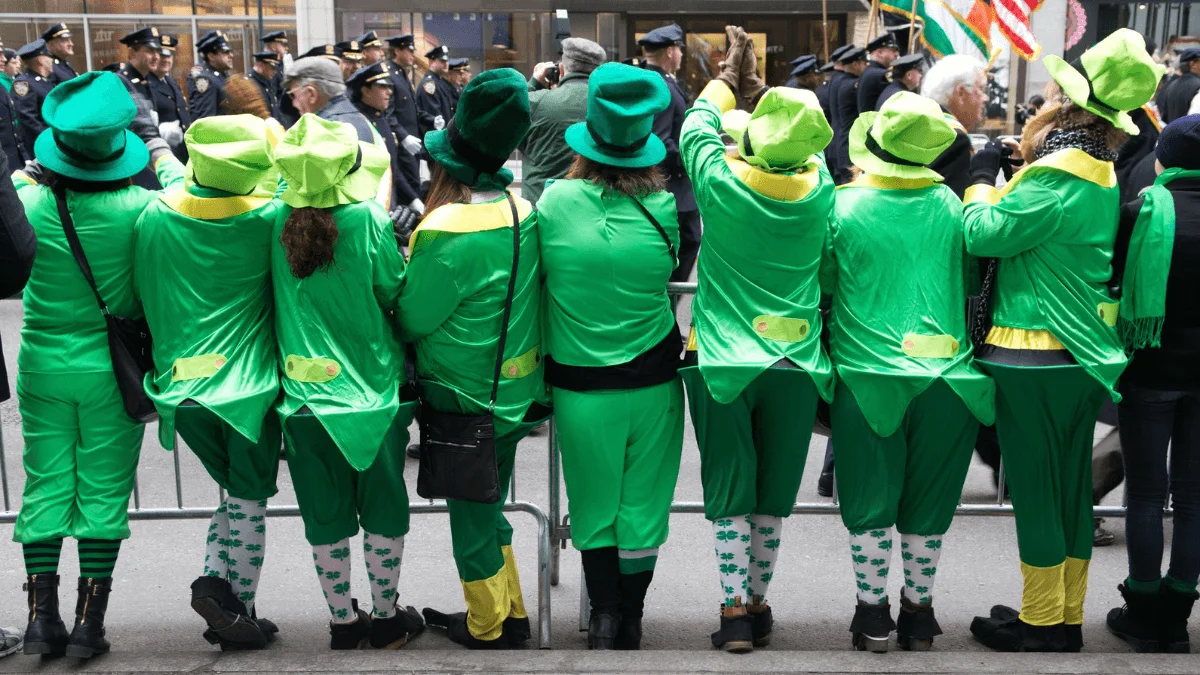Saint Patrick’s Day, celebrated annually on March 17th, is a cultural and religious holiday that pays tribute to Saint Patrick, the patron saint of Ireland. This day, which marks the death of Saint Patrick, has evolved from a religious observance to a worldwide celebration of Irish culture, complete with parades, green attire, and public festivities.
Understanding the history of Saint Patrick’s Day is essential to appreciate the significance of this holiday and how it has become a global phenomenon.
Who was Saint Patrick?
Saint Patrick, known as the patron saint of Ireland, was a fifth-century Christian missionary and bishop. Born in Roman Britain, he was kidnapped at the age of 16 and taken to Ireland as a slave. He escaped but returned about 12 years later to convert the Irish to Christianity.
By the time of his death on March 17, 461, he had established monasteries, churches, and schools. Many legends grew up around him—for instance, that he drove the snakes out of Ireland and used the three-leafed shamrock to explain the concept of the Holy Trinity.

The Origins of Saint Patrick’s Day
The celebration of Saint Patrick’s Day began as a religious feast day in honor of Saint Patrick on the anniversary of his death.
The day was made an official feast day in the early 17th century by the Catholic Church, the Anglican Communion, the Eastern Orthodox Church, and the Lutheran Church.
The day commemorates Saint Patrick and the arrival of Christianity in Ireland and celebrates the heritage and culture of the Irish in general.
Over time, Saint Patrick’s Day has evolved from a strictly religious holiday observed by a small number of people in Ireland to a worldwide celebration of all things Irish.
Saint Patrick’s Day in Ireland
In Ireland, Saint Patrick’s Day is both a holy day and a national holiday. The day begins with church services to honor Saint Patrick and pray for missionaries worldwide.
Afterward, many Irish families celebrate with a special meal. Corned beef and cabbage, a traditional Irish dish, is often part of this feast.
Saint Patrick’s Day parades are a relatively recent tradition in Ireland. The first parade in Ireland was held in Dublin in 1931.
Today, the Dublin Saint Patrick’s Day Parade attracts more than 500,000 attendees each year, making it the largest Saint Patrick’s Day parade in Ireland.
Saint Patrick’s Day in the United States
Saint Patrick’s Day was first celebrated in the United States by Irish immigrants as a way to remember their heritage while embracing their new homeland. The first recorded Saint Patrick’s Day parade in the U.S. was held in New York City in 1762 and over the years. These parades have become a grand spectacle of music, dance, and cultural pride.
In the U.S., Saint Patrick’s Day is not a public holiday but is widely recognized and celebrated throughout the country with parades, wearing of green attire, and public festivities.
Cities with large Irish-American populations, like Boston and Chicago, hold large parades and other events. Chicago dyes its river green each year for the celebration.

The Globalization of Saint Patrick’s Day
Saint Patrick’s Day has grown from a religious holiday in Ireland to a global celebration of Irish culture. The holiday is now celebrated in countries all around the world, including Canada, Australia, Japan, England, and Mexico, to name just a few.
These celebrations often include parades, wearing of green attire, and public parties. The globalization of Saint Patrick’s Day can be attributed to the widespread Irish diaspora, as well as the universal appeal of the holiday’s themes of unity, friendship, and celebration.
However, it’s important to note that the holiday has also been commercialized to a great extent. Many businesses, especially those in the food and beverage industry, capitalize on the holiday by offering special promotions and products.
The Symbols & Traditions of Saint Patrick’s Day
Saint Patrick’s Day is rich with symbols and traditions that have evolved. The most well-known symbol is the shamrock, a three-leafed plant that Saint Patrick is said to have used to explain the concept of the Holy Trinity.
Today, people wear shamrocks on their clothing or dye them green as a festive way to celebrate. Another popular tradition is wearing green. This tradition started in the 17th century when green ribbons and shamrocks were worn to celebrate the holiday.
Today, people all over the world dress in green to celebrate Saint Patrick’s Day. The legend of the leprechaun is also associated with Saint Patrick’s Day.
Leprechauns are mythical creatures from Irish folklore that are often depicted as small, bearded men in green coats who spend their time making shoes and hiding their gold at the end of a rainbow.
Saint Patrick’s Day Food and Drink
Food and drink play a significant role in the celebration of Saint Patrick’s Day. Traditional Irish dishes, such as corned beef and cabbage, Irish stew, and soda bread, are commonly associated with the holiday.
These hearty dishes reflect the agricultural heritage of Ireland and provide sustenance for the day’s festivities. In terms of drink, Guinness, a popular Irish stout, sees a significant surge in sales on Saint Patrick’s Day.
Other Irish whiskeys and beers are also enjoyed. In recent years, green beer – beer dyed green in honor of the holiday – has become popular. If not traditional, drink of choice for some.
The Impact of Saint Patrick’s Day
Saint Patrick’s Day has a significant impact both culturally and economically. Culturally, it serves as a celebration of Irish heritage and identity, both in Ireland and in the global Irish diaspora.
It provides an opportunity for people to connect with their roots, share traditions, and express pride in their heritage. Economically, Saint Patrick’s Day is a major boost for businesses, particularly in the hospitality and retail sectors.
In cities around the world, bars and restaurants often see a surge in customers, and many businesses sell Saint Patrick’s Day-themed products, from clothing to decorations to food and drink.
Controversies & Criticisms of St Patrick’s Day
While Saint Patrick’s Day is widely celebrated, it is not without its controversies and criticisms. One of the main debates about the holiday revolves around its commercialization.
Some argue that the holiday has strayed from its roots as a religious celebration and has become overly commercialized, with businesses capitalizing on the holiday for profit. Another criticism is related to excessive drinking.
Saint Patrick’s Day is often associated with public intoxication and disorderly conduct. Particularly in places where the holiday is celebrated with large public events. This has led to concerns about public safety and the perpetuation of negative stereotypes about the Irish.
Conclusion
Saint Patrick’s Day, is a cultural and religious holiday celebrated on March 17th. Has evolved from a religious observance in Ireland to a worldwide celebration of Irish culture. The holiday pays tribute to Saint Patrick, the patron saint of Ireland, and celebrates the heritage and culture of the Irish in general.
Despite some controversies and criticisms, Saint Patrick’s Day continues to be a significant cultural event. That brings people together to celebrate Irish heritage and culture. As we look forward to future Saint Patrick’s Day celebrations.
It’s important to remember and respect the holiday’s origins and traditions, while also embracing the joy and unity it brings to people around the world.
FAQs
Saint Patrick was a fifth-century Christian missionary and bishop in Ireland. He is known as the patron saint of Ireland.
Saint Patrick’s Day is a cultural and religious holiday celebrated on March 17th. It pays tribute to Saint Patrick, the patron saint of Ireland, and celebrates the heritage and culture of the Irish in general.
The celebration of Saint Patrick’s Day began as a religious feast day in honor of Saint Patrick on the anniversary of his death. It was made an official feast day in the early 17th century by various Christian churches.
In Ireland, it is both a holy day and a national holiday with church services and a special meal. In the U.S., it is widely recognized and celebrated with parades, wearing of green attire, and public festivities.
The most well-known symbol is the shamrock, a three-leafed plant that Saint Patrick is said to have used to explain the concept of the Holy Trinity. Wearing green and the legend of the leprechaun are also associated with this day.
Saint Patrick’s Day has a significant impact both culturally and economically. It serves as a celebration of Irish heritage and identity. It provides a major boost for businesses, particularly in the hospitality and retail sectors.
Yes, some argue that the holiday has become overly commercialized and is often associated with public intoxication. Disorderly conduct, leading to concerns about public safety and the perpetuation of negative stereotypes about the Irish.
About us
Saint Patricks Day
Saint Patricks Day is your go-to guide for everything related to this significant Irish celebration. We strive to provide detailed and accurate information about the history, traditions, and unique celebrations of Saint Patrick’s Day. Visit our About us for more information.

